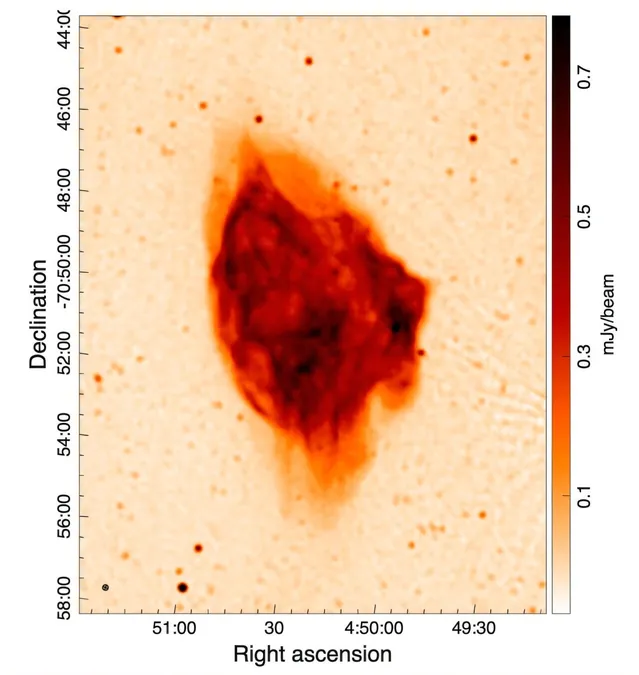
China's Lunar Takeover: The Race for Space Resources and Global Influence
2025-06-11
Author: Jia
China's Ambitious Lunar Goals
China is making headlines with its aggressive lunar ambitions, positioning itself as a formidable force in the realm of space exploration. Already the first country to land and retrieve samples from the Moon's dark side, China is setting its sights even higher with plans like the Chang’e-8 mission and the ambitious International Lunar Research Station (ILRS) in collaboration with Russia.
A New Space Race in the Making
This alliance is more than just a scientific endeavor; it marks a strategic move to secure vital resources like helium-3 and rare earth elements, essential for future energy and technological supremacy. China's ambitious plans aim not only to challenge long-standing U.S. leadership in space but also to redefine the global power dynamics that have existed for decades.
The China-Russia Space Bloc
Set to be revealed in April 2025, the ILRS is expected to feature a lunar nuclear plant, a project backed by Russia's Roscosmos and China National Space Administration (CNSA), aiming for implementation by 2035. The station will serve as a scientific hub, attracting up to 17 partner countries and positioning itself as a counter to the U.S.-led Artemis program.
Harnessing Resources for Global Dominance
China’s lunar program is not solely about exploration—it's heavily driven by geopolitical strategy. Analysts note that the collaboration with Russia has gained momentum since the Ukraine conflict, enabling China to assist Russia in overcoming Western sanctions through joint space projects.
Strategic Resource Acquisition
China aims to put boots on the Moon by 2030, laying the groundwork for a permanent base with the Chang’e-8 mission scheduled for 2028. Reports suggest that China's focus on the far side of the Moon isn't merely for exploration but is a calculated move to tap into abundant resources, including the rare helium-3 isotope found in lunar soil. This discovery could provide significant energy potential, as 40 grams of helium-3 is estimated to equal the energy output of 5,000 tons of coal.
Technological Breakthroughs on the Horizon
Should China succeed in harnessing helium-3, the nation could lead in revolutionary technologies like quantum computing. Experts predict that enough helium-3 could facilitate the cooling of quantum technology to optimal temperatures, paving the way for breakthroughs that could alter the landscape of global information security.
Implications for Global Power Dynamics
Control over lunar resources presents a significant advantage, especially for a country looking to reduce reliance on terrestrial supply chains. Currently, China leads in the processing of heavy rare earth elements critical for advanced technologies, from military applications to renewable energy. The implications of this dominance extend beyond economics; they threaten to undermine U.S. technological advantages in defense and intelligence.
The Road Ahead: Challenges and Speculations
While these ambitions sound impressive, the feasibility of large-scale lunar mining and the operationalization of helium-3 remain uncertain, with much speculation surrounding China's capabilities in these areas. Furthermore, with no Western satellite coverage of the Moon's far side, verifying these developments presents a significant challenge.
Conclusion: A New Era of Space Competition?
As China races towards its lunar goals, the implications of its strategy could reshape not just space exploration, but the very fabric of global power relations. Whether the West can counter this shift in dynamics remains to be seen, but one thing is clear: the future of space is not just about exploration; it's about securing resources and asserting dominance.



 Brasil (PT)
Brasil (PT)
 Canada (EN)
Canada (EN)
 Chile (ES)
Chile (ES)
 Česko (CS)
Česko (CS)
 대한민국 (KO)
대한민국 (KO)
 España (ES)
España (ES)
 France (FR)
France (FR)
 Hong Kong (EN)
Hong Kong (EN)
 Italia (IT)
Italia (IT)
 日本 (JA)
日本 (JA)
 Magyarország (HU)
Magyarország (HU)
 Norge (NO)
Norge (NO)
 Polska (PL)
Polska (PL)
 Schweiz (DE)
Schweiz (DE)
 Singapore (EN)
Singapore (EN)
 Sverige (SV)
Sverige (SV)
 Suomi (FI)
Suomi (FI)
 Türkiye (TR)
Türkiye (TR)
 الإمارات العربية المتحدة (AR)
الإمارات العربية المتحدة (AR)